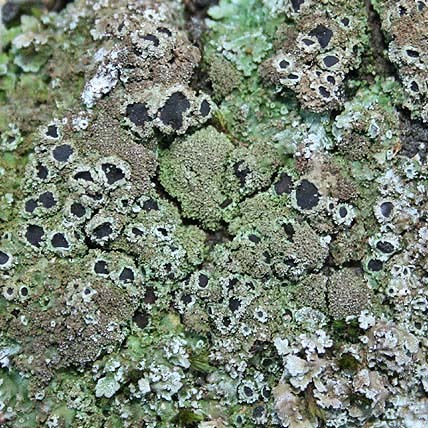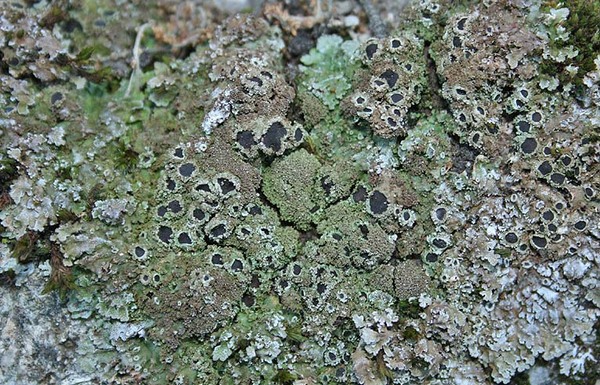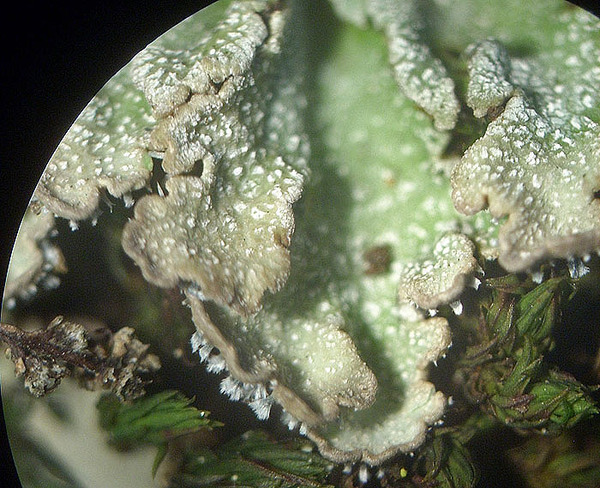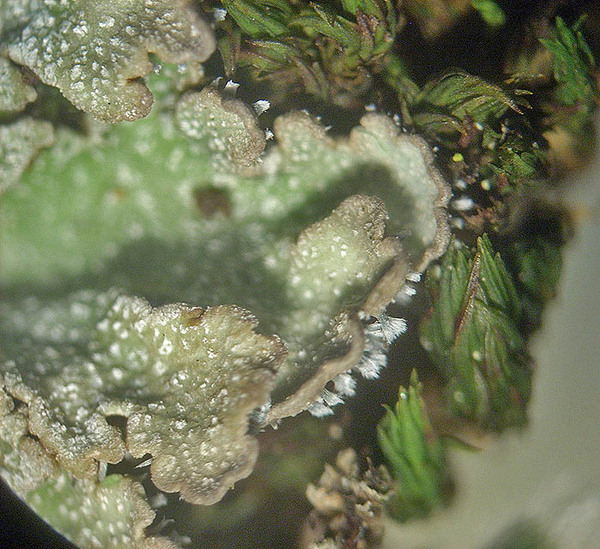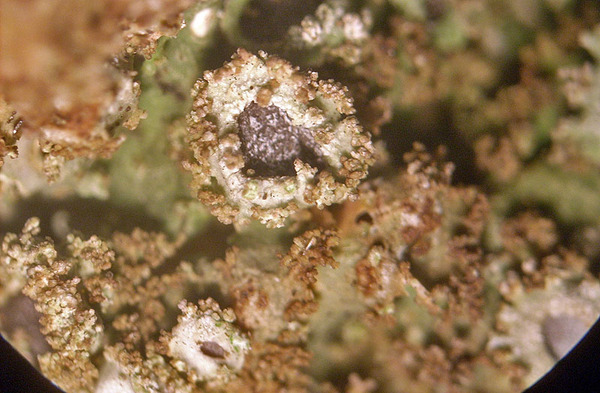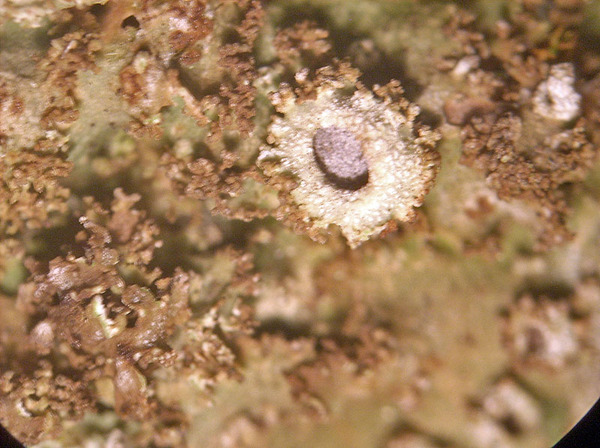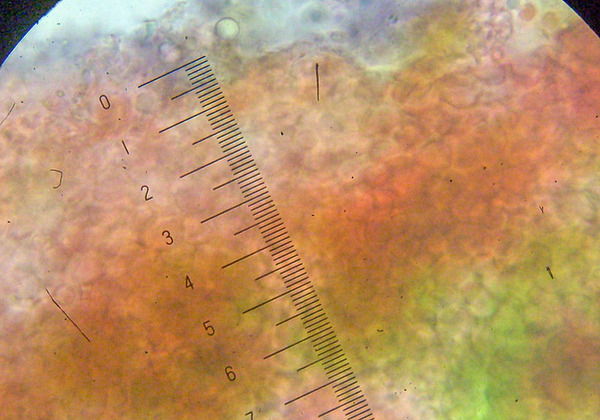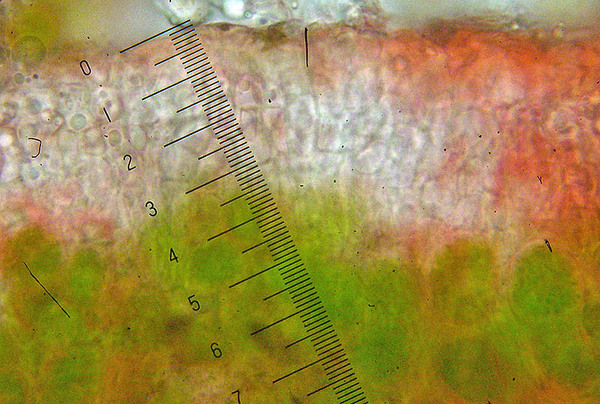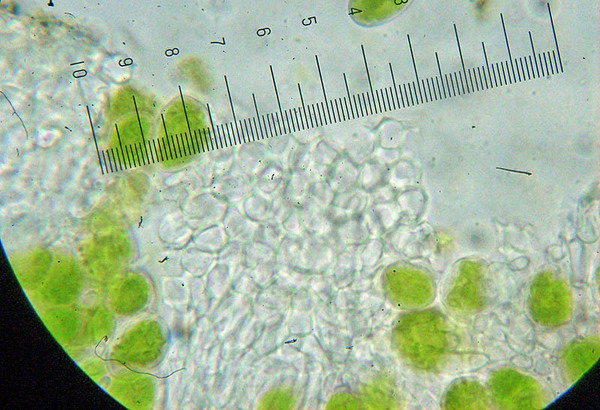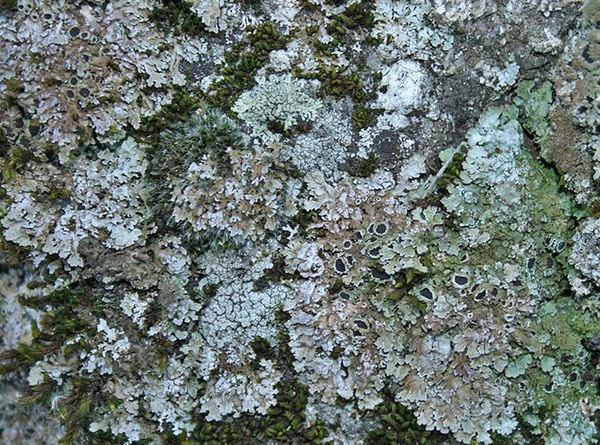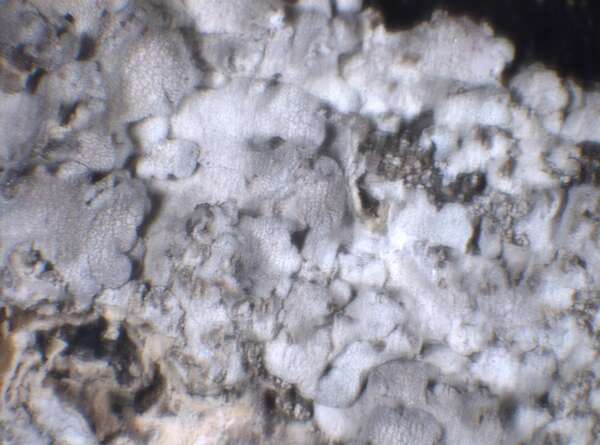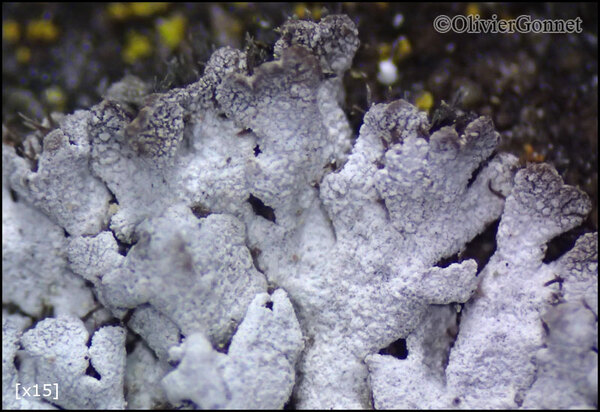Physconia grisea subsp. lilacina (Arnold) Poelt
Nova Hedwigia, 12: 120, 1966. Basionym: Parmelia pulverulenta f. lilacina Arnold - Flora, 46: 589, 1863.
Synonyms: Physcia grisea var. lilacina (Arnold) Nádv.; Physcia lilacina (Arnold) Poelt; Physconia lilacina (Arnold) Poelt
Distribution: N - VA (Piervittori & Isocrono 1999), Lig. C - Sar. S - Cal (Puntillo 1996, Otte & al. 2002), Si (Otte & al. 2002, Grillo & Caniglia 2004, 2006).
Description: Thallus foliose, heteromerous, dorsiventral, narrow-lobed, forming 5-6 cm wide rosettes. Lobes (1-)2-3 mm wide, radiating and partly overlapping, markedly white-pruinose, violet-grey when wet, flat to irregularly concave, with primarily marginal, flattened, erect to adpressed phyllidia. Lower surface whitish, with simple to forked, pale rhizines. Upper cortex pseudoparenchymatous; medulla white; lower cortex prosoplectenchymatous, with hyphae oriented parallel to the long axis of lobes. Apothecia very rare, lecanorine, with a pruinose disc and a phyllidiate thalline margin. Asci 8-spored, elongate-clavate, very thin-walled, with a K/I+ blue, tall tholus penetrated by a faintly amyloid apical cushion, the wall K/I-, surrounded by a K/I+ blue outer layer, Lecanora-type. Ascospores 1-septate, brown, ellipsoid, often poorly developed. Pycnidia rare. Conidia 4-7 µm long. Photobiont chlorococcoid. Spot tests: all negative. Chemistry: not known, probably without lichen substances. Note: on rock, more rarely on nutrient-enriched bark or lignum; in Italy mostly restricted to dry-warm sites (in the Mediterranean belt and in dry-warm Alpine valleys).
Growth form: Foliose, narrow lobed
Substrata: rocks
Photobiont: green algae other than Trentepohlia
Reproductive strategy: mainly asexual, by soredia, or soredia-like structures (e.g. blastidia)
Commonnes-rarity: (info)
Alpine belt: absent
Subalpine belt: absent
Oromediterranean belt: absent
Montane belt: extremely rare
Submediterranean belt: extremely rare
Padanian area: absent
Humid submediterranean belt: very rare
Humid mediterranean belt: absent
Dry mediterranean belt: very rare
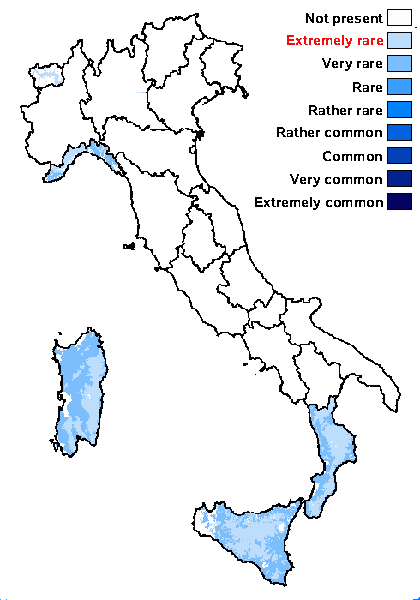
Predictive model
Herbarium samples
Growth form: Foliose, narrow lobed
Substrata: rocks
Photobiont: green algae other than Trentepohlia
Reproductive strategy: mainly asexual, by soredia, or soredia-like structures (e.g. blastidia)
Commonnes-rarity: (info)
Alpine belt: absent
Subalpine belt: absent
Oromediterranean belt: absent
Montane belt: extremely rare
Submediterranean belt: extremely rare
Padanian area: absent
Humid submediterranean belt: very rare
Humid mediterranean belt: absent
Dry mediterranean belt: very rare

Predictive model
| Herbarium samples |
 Index Fungorum
Index Fungorum
 GBIF
GBIF
